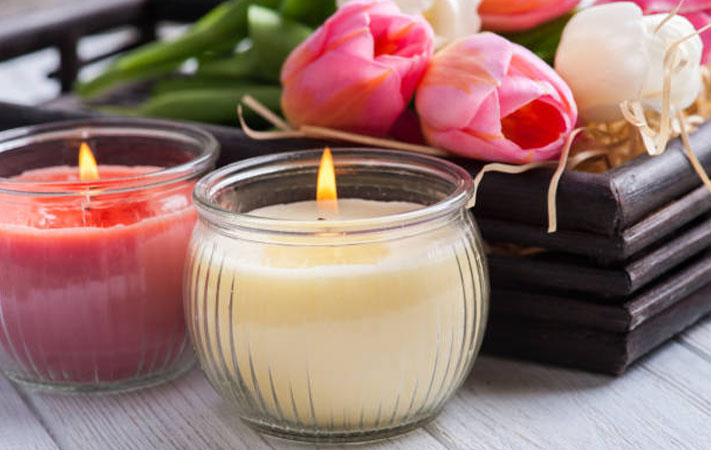Scented candles
>Scented candles are candles infused with fragrances to add pleasant aromas to the air when they are burned. These candles are popular for creating a cozy and inviting atmosphere, providing not only visual appeal but also an enhanced olfactory experience. Scented candles come in a wide variety of fragrances, allowing individuals to choose scents that suit their preferences or match specific moods and occasions.
Here are key aspects related to scented candles:
1. Fragrance Options: Scented candles are available in a vast array of fragrances, ranging from floral and fruity to spicy and woody. Common scents include lavender, vanilla, citrus, cinnamon, and more.
2. Ingredients: The fragrance in scented candles can be derived from essential oils, natural extracts, or synthetic fragrance oils. Some candles also incorporate a combination of these ingredients.
3. Wax Types:
Scented candles are typically made from various types of wax, including:
Paraffin Wax: A commonly used wax derived from petroleum. It has a high fragrance throw.
Soy Wax: Made from soybean oil. It's considered a more eco-friendly option.
Beeswax: A natural wax produced by bees. It has a subtle honey-like scent.
Palm Wax: Derived from palm oil. Some consider it a sustainable option if sourced responsibly.
4. Candle Types: Scented candles come in various forms, including jar candles, pillar candles, votives, tapers, and more. Each type may offer a different visual and olfactory experience.
5. Aromatherapy Candles: Some scented candles are marketed as aromatherapy candles, incorporating essential oils believed to have therapeutic properties. For example, lavender-scented candles may be promoted for relaxation and stress relief.
6. Care and Safety: To ensure safe use, it's important to follow the manufacturer's guidelines for burning time and candle care.
Scented candles provide a versatile and enjoyable way to enhance the sensory experience in a space, whether it's for relaxation, ambiance, or special occasions. When using scented candles, it's advisable to consider personal preferences, potential sensitivities, and safety guidelines for a pleasant and safe experience.
Our Benefits
- 100% Safe For Your Skin
- Special Offers For You
- Created From Natural
- Quality Product

